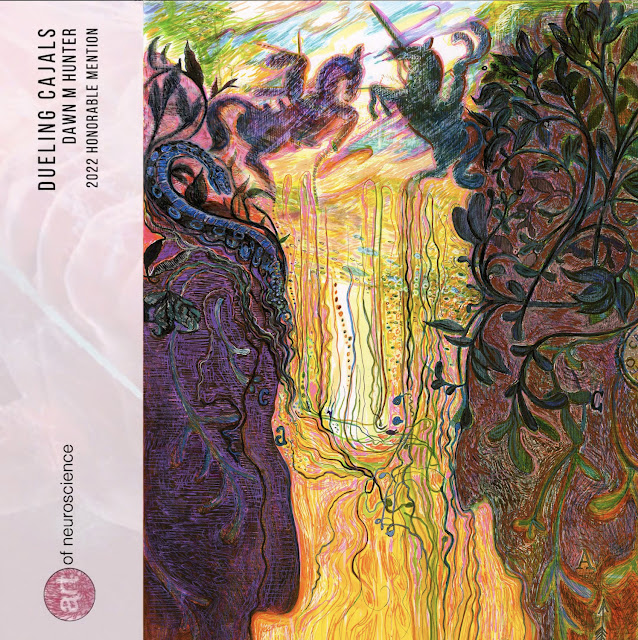"I am an artist, and I draw every day. It is how I know and understand the world. One day back in 2012, I was looking up neuroscience terminology to supplement an article I was reading on the claustrum, I stumbled across Cajal’s scientific drawings. In the midst of trawling visuals on the web, I was swept away within “gesturely expressive” cellular images drawn in implied space. I was dwarfed and transported into Cajal’s microscopic world. Other neuroscience drawings were in the image cache, like those of Camillo Golgi. However, I was not as taken with them, because Golgi’s illustrations were surrounded by a border that created closure and containment and possessed a topographical mannerism. Based on those visual qualities, I felt Golgi’s drawings were “designed,” and that construction revealed a particular point of view regarding the role of drawing in his work: that drawing was a vehicle to guide, transcribe, and organize nature in a manner that demonstrated a theory. Instead of creating drawing from a designer’s perspective, Cajal’s work in comparison is drawn with a type of perceptual observation, one in which the inherent design of nature is discovered through sighting. Drawing was a tool to observe, discern and recount microanatomy structure. Cajal’s drawings are filled with actual lines and drawn with implied space. I believe they demonstrate a philosophy that he was at the service of nature—recording and reporting the truthfulness of sight’s journey." - Dawn Hunter, November 2017
The above quote is from my piece "Drawn To, Drawn From Experience" written for the National Library of Medicine's, Circulating Now, blog. It is the first of a three part series I am writing for them about Cajal, the latter two are forthcoming in 2018.
I completed my Senior Research Fulbright Fellowship at the Instituto Cajal, Madrid, España in December, 2017. It was a remarkable privilege to commune with Cajal on a daily basis through studying and drawing his scientific illustrations. There is information in those works that can only be accessed by active observation: drawing. Drawing provides a type of interaction with the works and entry into information about the maker and his theories that is not possible through passive observation. Cajal proved to be a great teacher, and my "apprenticeship" yielded a fruitful scholarship of knowledge. More, of course, is yet to come. In the meantime, below are a couple of examples of my drawings of his drawings, as well as, information on my writing for the National Library of Medicine.
Dawn Hunter's study of Cajal's scientific drawing of pyramidal neurons, FRONT, 11" x 14," marker and pen on paper
Dawn Hunter's study of Cajal's scientific drawing of pyramidal neurons, BACK, 11" x 14," marker and pen on paper
Unfortunately, nature seems unaware of our intellectual need for convenience and unity, and very often takes delight in complication and diversity.
- Santiago Ramón y Cajal from his 1906 Nobel lecture
"The structure and connexions of neurons."























